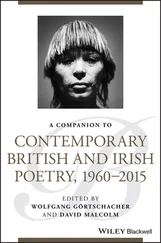A Companion to Motion Pictures and Public Value
Здесь есть возможность читать онлайн «A Companion to Motion Pictures and Public Value» — ознакомительный отрывок электронной книги совершенно бесплатно, а после прочтения отрывка купить полную версию. В некоторых случаях можно слушать аудио, скачать через торрент в формате fb2 и присутствует краткое содержание. Жанр: unrecognised, на английском языке. Описание произведения, (предисловие) а так же отзывы посетителей доступны на портале библиотеки ЛибКат.
- Название:A Companion to Motion Pictures and Public Value
- Автор:
- Жанр:
- Год:неизвестен
- ISBN:нет данных
- Рейтинг книги:3 / 5. Голосов: 1
-
Избранное:Добавить в избранное
- Отзывы:
-
Ваша оценка:
- 60
- 1
- 2
- 3
- 4
- 5
A Companion to Motion Pictures and Public Value: краткое содержание, описание и аннотация
Предлагаем к чтению аннотацию, описание, краткое содержание или предисловие (зависит от того, что написал сам автор книги «A Companion to Motion Pictures and Public Value»). Если вы не нашли необходимую информацию о книге — напишите в комментариях, мы постараемся отыскать её.
A Companion to Motion Pictures and Public Value
Companion
A Companion to Motion Pictures and Public Value
A Companion to Motion Pictures and Public Value — читать онлайн ознакомительный отрывок
Ниже представлен текст книги, разбитый по страницам. Система сохранения места последней прочитанной страницы, позволяет с удобством читать онлайн бесплатно книгу «A Companion to Motion Pictures and Public Value», без необходимости каждый раз заново искать на чём Вы остановились. Поставьте закладку, и сможете в любой момент перейти на страницу, на которой закончили чтение.
Интервал:
Закладка:
45 . 2015. “Scaffolding Memory: Themes, Taxonomies, Puzzles.” In Contextualizing Human Memory: An Interdisciplinary Approach to Understanding How Individuals and Groups Remember the Past, edited by Charles Stone and Lucas Bietti, 187–205. New York: Routledge.
46 ., and Evelyn Tribble. 2014. “‘The Creation of Space’: Narrative strategies, group agency, and skill in Lloyd Jones’s The Book of Fame.” In Mindful Aesthetics: Literature and the Sciences of Mind, edited by Chris Danta and Helen Groth, 141–60. Bloomsbury: Continuum.
47 Theiner, Georg, and Chris Drain. 2016. “What’s the Matter with Cognition? A ‘Vygotskian’ Perspective on Material Engagement Theory.” Phenomenology and the Cognitive Sciences 16: 837–62. https://doi.org/10.1007/s11097-016-9482-y.
48 Torrance, Steve, and Frank Schumann. 2019. “The Spur of the Moment: What Jazz Improvisation Tells Cognitive Science.” AI & Society 34 (2): 251–268. https://doi.org/10.1007/s00146-018-0838-4.
49 van der Schyff, Dylan, Andrea Schiavio, Ashley Walton, Valerio Velardo, and Anthony Chemero. 2018. “Musical Creativity and the Embodied Mind: Exploring the Possibilities of 4E Cognition and Dynamical Systems Theory.” Music & Science 1: 1–18. https://doi.org/10.1177/2059204318792319.
50 van Dijk, Ludger, and Erik Rietveld. 2018. “Situated anticipation.” Synthese: 1–23. https://doi.org/10.1007/s11229-018-02013-8.
51 Wheeler, Michael. 2018. “Talking about More than Heads: The Embodied, Embedded and Extended Creative Mind.” In Creativity and Philosophy, edited by Berys Gaut and Matthew Kieran, 230–250. London: Routledge.
Filmography
1 Heath, Virginia, et al. 2014. From Scotland with Love. Scotland: Faction North. https://www.imdb.com/title/tt3112280/fullcredits/?ref_=tt_ql_cl.Pearlman, Karen, et al. 2020. I Want to Make a Film about Women. Australia: The Physical TV Company. https://www.imdb.com/title/tt11044474/fullcredits/?ref_=tt_ov_st_sm.
2 Shub, Esfir, et al. 1927. The Fall of the Romanov Dynasty. Soviet Union: Sovkino. https://www.imdb.com/title/tt0018246/fullcredits/?ref_=tt_ov_st_sm.
3 Soda Jerk, et al. 2018. Terror Nullius. Australia: Soda Jerk. https://www.imdb.com/title/tt9014996/companycredits?ref_=ttfc_ql_4.
NOTES
1 1Within the limits of budget and resources available to us. These included the screen studio at Macquarie University, objects lent to us by the Australian History Museum, the generous in-kind sponsorship of Opera Australia who provided some furnishings and props, Iastrebova’s own Russian heritage and family heirlooms, and some stuff my mother collected from flea markets. Iastrebova and the design department she manages/directs (a team of 5 to 7 people on this production) were responsible for identifying, gathering, selecting, arranging these items, as well as designing, drawing, creating, constructing, painting, graphic design, printing, arranging, and managing everything that is ultimately in the image except for performance and light.
2 2The screenshots and portraits actually have an even more complex, but fairly typical, creative backstory. Iastrebova wanted to put many images into the design, which she knew, from her research and from her own upbringing in Russia, would be typical for the space. She mentioned to the producer Richard James Allen, in a conversation that I only happened to overhear fragments of, that she wanted to get portraits of the actual historical figures who were Shub’s friends, but was concerned about copyright. Allen arranged instead to give a stills photographer access to the actor’s costumes fitting sessions so that she could take pictures of them “in character.” These were selected and graded with Marcus Eckermann, Macquarie University technical manager, framed by an art department assistant and hung by Iastrebova. Probably. I wasn’t there, so I don’t know, and my only contribution to the whole sequence was to say “sure, if you can manage it, go for it!”
3 3Haralabidou attended VGIK in Moscow, a film school where she studied the work and milieu of her character, Esfir Shub, who “supervised the montage workshop in Eisenstein’s class” (Petric 1978, 430).
4 4Directors don’t direct these people, they give direction to cinematographers, often by sharing visual references. Cinematographers then give direction to the camera crews who create by arranging the lights.
5 5In context, Chatman is suggesting not that a film is the product of a single controlling intelligence, but that films seem to be such. We suggest that, to the extent films have so seemed, to some viewers and critics, this too is an outcome of problematic and culturally specific assumptions. In what follows, we do not consider the influence of continental philosophers whose work has shifted some discussion away from individual authorship toward understanding the author as a construct or as a relationship. While we agree that authorship can be discussed as “a dynamic enterprise among author, work, and spectator” (Gerstner and Staiger 2003, 19), for our purposes here we look to discussions in aesthetics, social ontology, and cognitive theory of the specifics of creative collaboration in filmmaking.
6 6The metaphor is from John Haugeland’s brilliant essay “Mind Embodied and Embedded” (Haugeland 1998, 228–30, compare Sutton 2010, 201).
7 7With thanks to Ted Nannicelli for his note on a draft of this article pointing out that the philosophers writing about director/editor relationships are proceeding from “general intuitions” that “the director is in charge” (Nanicelli March 21, 2020). The question is, although the director may be deemed responsible for creative decisions in the end, could more specific knowledge of creative processes help to correct cultural misapprehensions about the distributed aspects of filmmakers creative decision making?
8 8See for example the popular industry blog “Premium Beat,” where on July 10, 2018, Lewis MacGregor writes: “After all, the editor’s job is to be invisible. The American Cinema Editors Association quite literally calls it the invisible art.”
9 9Throughout film history, women have had more opportunities in editing than many other areas. This continues to be the case even as gains in gender equity are being made. According to the 2020 Center for the Study of Women in Television and Film Report, in the 500 top grossing films of 2019, “Women fared best as producers (27%), followed by editors (23%)” ( https://womenintvfilm.sdsu.edu/wp-content/uploads/2020/01/2019_Celluloid_Ceiling_Report.pdf) (see Lauzen 2019, 3–4).
10 10For contemporary examples of this still popular form see From Scotland with Love (Heath et al. 2014) or Terror Nullius (Soda Jerk 2018). Feminist film theorist Laura Mulvey writes of the compilation film that “the practice, which is specifically one of montage, is a reminder that editing is one of the few professional skills in filmmaking in which women have traditionally had a place. It is no surprise that some of the key influential compilation filmmakers have been women” (Mulvey 2015, 28).
11 11There are, at time of writing, no books of theory about Shub in English. Vertov and Eisenstein, by comparison are each the subject of very substantial, diverse studies and many books, chapters and dissertations in film theory. While Vertov only has one biographer in English, the biography is in three volumes (see MacKay 2018). Eisenstein has four biographies written about him in English. Shub has none. She may have contributed to, even welcomed this anti-individualist position. “Vlada Petric points out that Shub’s autobiography, yet to be translated into English, dedicates separate chapters to great Soviet and European socialist cultural and cinematic figures, including Mayakovsky, Eisenstein, Vertov, and Joris Ivens. This posits a collaborative and collective sense of self in relation to colleagues” (Stollery 2002, 96).
Читать дальшеИнтервал:
Закладка:
Похожие книги на «A Companion to Motion Pictures and Public Value»
Представляем Вашему вниманию похожие книги на «A Companion to Motion Pictures and Public Value» списком для выбора. Мы отобрали схожую по названию и смыслу литературу в надежде предоставить читателям больше вариантов отыскать новые, интересные, ещё непрочитанные произведения.
Обсуждение, отзывы о книге «A Companion to Motion Pictures and Public Value» и просто собственные мнения читателей. Оставьте ваши комментарии, напишите, что Вы думаете о произведении, его смысле или главных героях. Укажите что конкретно понравилось, а что нет, и почему Вы так считаете.












